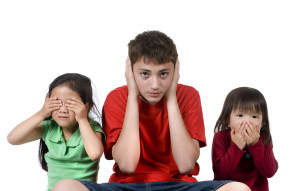
Disagreement has got a bad rap lately, and maybe it’s not hard to see why. There’s a great deal of mudslinging on social media, and elsewhere, and we do have a tendency to give knee-jerk reactions when presented with difficult issues.
Well, we’re here to reassure you that even during the season when we wish for peace on Earth, we can still disagree with one another. It is definitely possible to not see eye to eye, while still remaining civil. What’s more, our little thinkers need and deserve to see peaceful, rational discussion in action. Peaceful, rational discussion builds thinking skills with confidence, instead of fear or fury. It teaches us to listen, and to consider different ideas. It allows us to find solutions to problems and move, while heated arguments often leave us stuck.
Here are some tips for teaching your wee philosopher to argue without anger:
- Do away with the “if you’re not with us, you’re against us” mentality. Arguments aren’t supposed to be about winning. They’re supposed to be about finding the truth. Disagreement, in a weird way, moves that process along faster.
- Recognize that big questions rarely have only one answer. It’s hard to “take sides” when there are so many sides out there.
- Realize that progress rarely happens when things are status quo. Disagreeing peacefully leads to new ideas, new inventions, and new actions.
- Don’t take an opposing viewpoint just for the sake of having a viewpoint. It’s okay to say we don’t know, or that we’d like to find out more before stating our case.
- Emphasize that disagreeing with someone’s ideas should never lead to attacking them as a person. Calling names isn’t going to make someone’s point of view any less logical or valid.
- Use peaceful, constructive language while disagreeing, like:
- “That’s really interesting! What about this other idea?”
- “Is there somewhere in between our two ideas?”
- “I agree with this part, but maybe not that part.”
- “What might someone else say if they were in a different situation?”
- “How many different answers to this question can we find?”
Most importantly, let your child know that even though they are young, their ideas and their voice still count. As long as they explain why they think the way they think, and they speak to others with respect, they’re welcome to throw ideas in that don’t necessarily blend. Thank them for being brave enough to contribute, and congratulate them on being creative, critical thinkers.
Teaching a little thinker to disagree peacefully may be one of the most important gifts we give them this year. Maybe we could stand to gift it to one another as well.
Looking for a little help teaching your kid to argue the right way? Try this!
